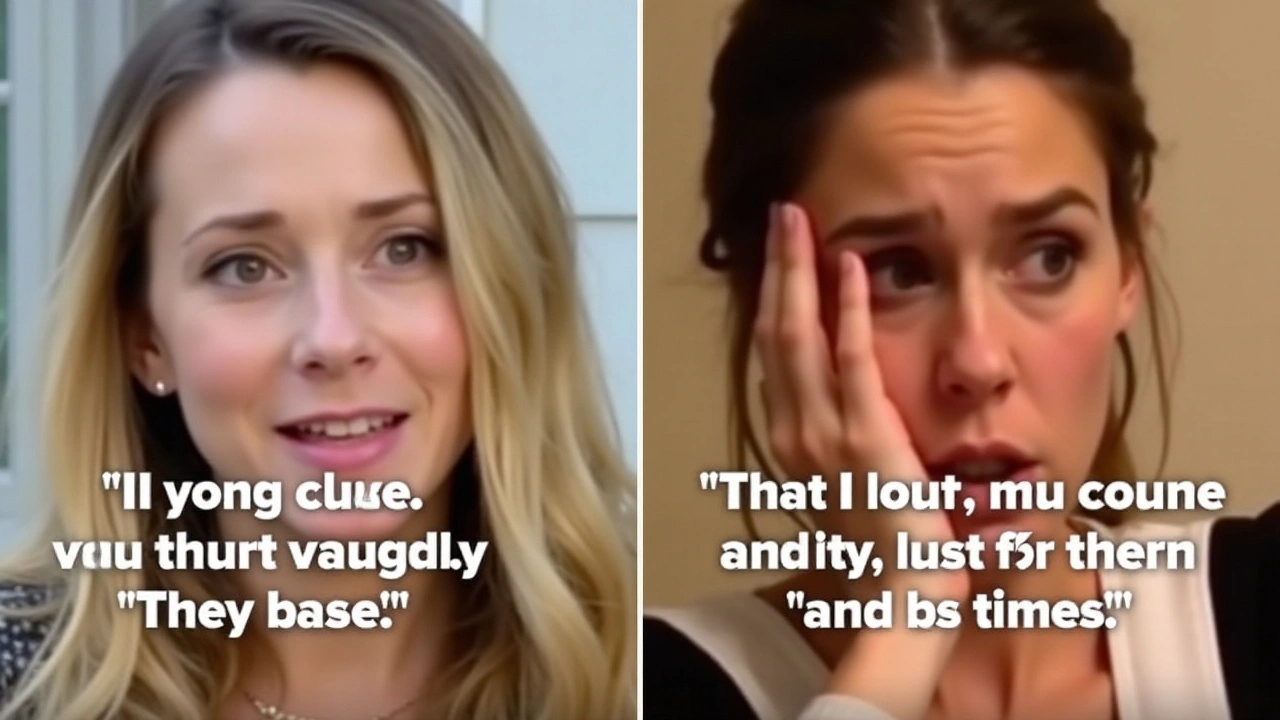The Genesis of the 'Very Mindful, Very Demure' Trend
The 'very demure, very mindful' trend, like many viral sensations, had humble beginnings. It all started with Jools Lebron, a TikTok influencer known for her witty and relatable content. With a following of 1.2 million, Jools decided to create a video that blended humor with a touch of irony. The clip features Jools showing off her makeup and attire for a day at work, highlighting the importance of being modest and mindful. This initial video struck a chord with viewers, amassing an astounding 9.4 million views and thousands of comments.
But what exactly does 'demure' mean in this context? Traditionally, demure fashion refers to clothing that is modest, understated, and often elegant. It avoids flashiness and opts for a more reserved aesthetic. In her videos, Jools not only showcases this style of fashion but also ties it together with the concept of mindfulness—being fully present and aware of one's actions and surroundings. This combination resonated with a broad audience, giving rise to what would soon become a cultural phenomenon.
Expanding the Trend
Once Jools realized the potential of her creation, she expanded on the 'very demure, very mindful' concept with a series of videos. These clips took the initial idea and applied it to various situations, further engaging her audience. One standout video titled 'How to exit the plane while being demure' garnered particular attention. In it, Jools humorously demonstrates how to leave an airplane gracefully, even in less-than-ideal circumstances.
Another notable entry in this series is 'How to be demure when you're hungover.' Here, Jools offers tips on maintaining a composed and mindful demeanor despite feeling the aftereffects of a night out. These videos continued to attract significant engagement, showing that the trend had stamina beyond a single viral hit.

The Cultural Impact
As the trend grew, it began to transcend TikTok, spreading to other social platforms like X/Twitter. What started as a humorous take on accepted social norms quickly evolved into a larger movement. Many users began to see 'very demure, very mindful' as more than just a joke; it became a lifestyle choice that advocated for simplicity, modesty, and mindfulness.
This cultural shift is intriguing, especially in a world that often values speed and flamboyance. The move towards simplicity and mindfulness offers a counterbalance to the hustle and bustle of modern life, encouraging people to slow down and be more intentional in their actions. It's a return to basics in a digital age that is anything but basic.
Why It Resonates
So, why has the 'very demure, very mindful' trend resonated so deeply with so many people? For one, it fills a gap in the social media landscape, which is often dominated by more ostentatious content. The craving for authenticity and simplicity is palpable, and Jools's content taps into that need. She's offering a refreshing take on what it means to be fashionable and mindful in today's world.
Moreover, the trend's satirical nature makes it uniquely appealing. By poking fun at societal expectations while promoting mindfulness and modesty, it allows viewers to critique and participate in the conversation rather than merely consuming content passively.

The Broader Implications
In the grand scheme of things, trends like 'very demure, very mindful' offer more than just fleeting entertainment. They have the power to influence behavior and shape cultural norms. As more people embrace this trend, we might see a broader societal shift towards more mindful and demure behaviors, particularly in public and professional settings.
This shift could have far-reaching implications. For instance, companies might start to value mindfulness more explicitly in their corporate cultures, promoting a healthier work-life balance and encouraging employees to be present and engaged. Similarly, the fashion industry could see a resurgence of demure styles, moving away from the fast fashion trends that dominate today.
What’s Next?
As the trend continues to grow, it will be interesting to see how it evolves and what new forms it takes. Jools Lebron, for her part, shows no signs of slowing down. She continues to produce content that resonates with her audience, keeping the conversation around demure fashion and mindfulness alive and well.
One possibility is that we could see the trend expand into other areas of life. Just as it has influenced fashion and behavior, it could start to touch on areas like home decor, wellness, and even technology usage. Imagine, for instance, a 'very demure, very mindful' approach to social media usage, advocating for fewer but more meaningful interactions online.

Conclusion
In summary, the 'very demure, very mindful' TikTok trend is more than just a passing fad. It's a reflection of a broader yearning for simplicity and mindfulness in a fast-paced, often chaotic world. Through her humorous and relatable content, Jools Lebron has sparked a movement that encourages people to be more present, mindful, and modest in their daily lives.
As we navigate an increasingly digital and complex world, trends like these offer a refreshing reminder of the benefits of slowing down and being intentional with our actions. Whether it’s through fashion, behavior, or simply the way we carry ourselves in public, the 'very demure, very mindful' trend shows that sometimes, less really is more.


Comments (9)
Ah, the perpetual yearning for 'demure mindfulness'-a quaint relic of bygone aristocratic poise, repackaged for the TikTok generation. One cannot help but note the paradox of selling restraint through a platform that thrives on hypervisibility. Yet Jools manages to cloak self‑promotion in the language of modesty, which is, frankly, a clever ploy. The aesthetic is reminiscent of late‑Victorian salons where whispers were currency. Still, the numbers-9.4 million views-prove that the masses still crave curated restraint. :)
Wow, this trend is exactly the boost we needed! It's like a breath of fresh air after scrolling through endless flash‑sale reels! Seriously, the way Jools blends humor with a calm vibe is pure gold! Everyone should try a 'demure' day at work and feel the difference! Keep the content coming, because motivation lives in these little mindful moments!!!
Oh, because nothing says 'I’ve got my life together' like pretending to disembark a plane with the poise of a 19th‑century debutante. Jools' tutorial on 'how to be demure when hungover' is practically a masterclass in existential comedy. One can almost hear the violins swelling as she whispers about mindfulness while the world spins. It’s the sort of high‑class performance art you’d expect at a gala, only now it’s livestreamed from a cramped cabin. Drama? Absolutely. Satire? You bet-though the satire sometimes feels like a mirror held up to our own pretensions.
While the numbers look impressive, the underlying message is shallow at best. The trend reduces genuine mindfulness to a brandable aesthetic, stripping away any real practice. Jools' videos are polished productions, not authentic explorations of modesty. This veneer of simplicity merely masks a relentless push for engagement metrics. In the end, it’s another cycle of consumption masquerading as enlightenment.
i think its cool how people are actually trying something different on tiktok. demure style kinda feels like a throwback but also fresh, ya know? the whole mindful vibe could be real if folks stick to it beyond the vids. maybe we’ll see less loud ads and more quiet moments online. honestly im not sure if it will last but it's a fun experiment.
One could argue that the 'very demure, very mindful' phenomenon represents a collective yearning for a return to interiority in an age defined by outward exhibition. When Jools Lebron frames modesty as an act of mindfulness, she in fact blurs the line between external appearance and internal awareness, suggesting that the two are inseparable. This synthesis invites us to reconsider the classical dichotomy posited by Socrates between the cared-for soul and the adorned body. If clothing and comportment are deliberately subdued, the wearer may be more inclined to attend to the cadence of breath, the texture of thought, and the rhythm of the present moment. The viral spread of this trend across platforms such as X further underscores a sociocultural feedback loop: the more people observe demure aesthetics, the more they internalize the associated values. It is reminiscent of the Stoic practice of *prosoche*, the vigilant attention to one’s mental states, yet translated into a visual vernacular accessible to the digital native. Moreover, the humor embedded in Jools' tutorials functions as a palimpsest, allowing viewers to engage with the absurdity of their own performative identities while simultaneously absorbing a sincere call to presence. The juxtaposition of a hungover morning routine with demure poise becomes a subtle commentary on resilience, portraying mindfulness not as a sanitized ideal but as a lived, imperfect practice. It is reminiscent of the Stoic practice of *prosoche*, the vigilant attention to one’s mental states, yet translated into a visual vernacular accessible to the digital native.
In corporate environments, such a shift could recalibrate the metrics of success away from flamboyant self‑promotion toward quiet competence. Fashion houses may respond by reintroducing garments that prioritize cut over sparkle, thereby influencing supply chains to favor sustainability over rapid turnover. The ripple effect could also manifest in digital design, prompting apps to encourage mindful interaction patterns rather than endless scrolling. While critics may dismiss the trend as a fleeting aesthetic, the fact that it resonates with millions suggests an underlying earnest desire for simplicity amidst information overload. As the meme evolves, it may integrate other domains-home décor, culinary arts, even algorithmic transparency-each adopting a 'demure' ethos that values restraint. This trajectory aligns with broader movements such as minimalism and slow living, yet distinguishes itself through a performative, communal dimension unique to social media. Ultimately, whether Jools continues to produce content or passes the baton, the cultural imprint of this trend may endure as a reminder that true mindfulness often wears the quietest clothes.
It’s disheartening to see people treating mindfulness as a costume rather than a conviction. We should be critiquing the very systems that profit from turning inner peace into a clickable trend. If we keep glorifying surface‑level demure aesthetics, we risk hollowing out any real ethical progress. The trend could be a catalyst, but only if we demand authentic practice, not just pretty videos. Let’s hold ourselves accountable, not just applaud the influencer.
Another fleeting fad.
I love how this conversation brings people together, showing that we can be stylish and calm at the same time 😊 Let’s keep supporting each other’s journeys toward mindfulness and keep the vibes positive! 🌟